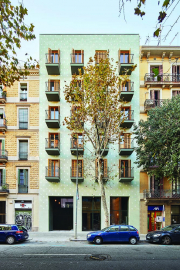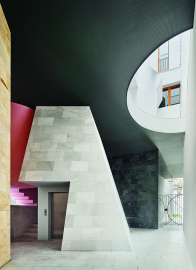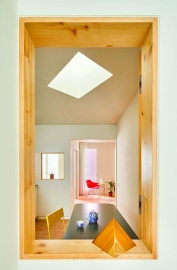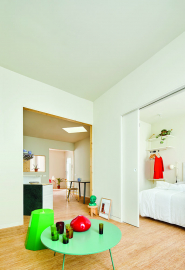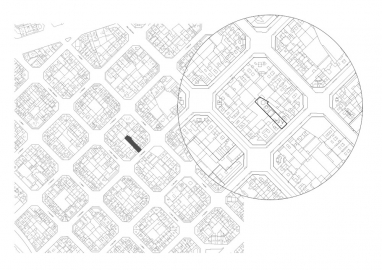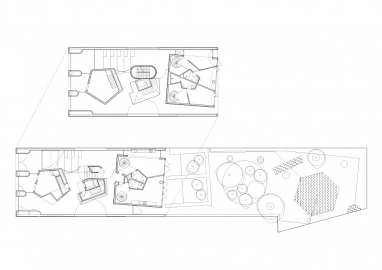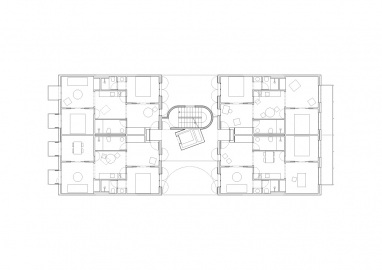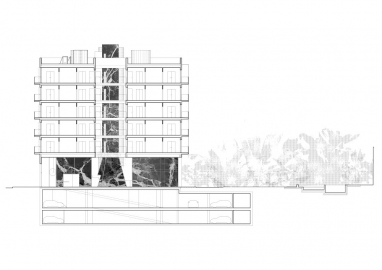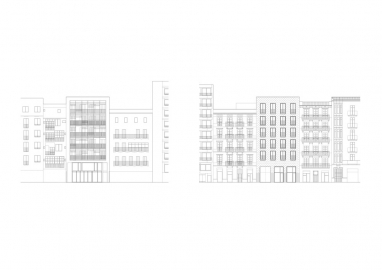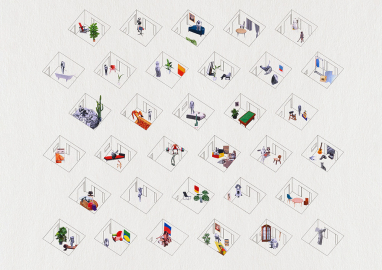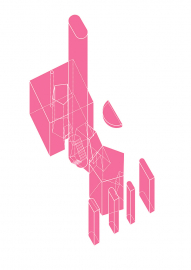110 ROOMS. Collective Housing at Provença Street
The collective housing contains a system of 110 rooms, which can be used as desired. Answering to the client’s demand, each apartment can be expanded or reduced adding or subtracting rooms in order to answer to inhabitants needs. With that flexibility in mind, rooms are similar eliminating any type of spatial hierarchy and program predetermination.
The building is designed as a system of similar rooms. So each apartment can be sized and programed depending on the need.
For the next years, each floor is divided as a set of 4 apartments of 5 rooms. Rooms are connected, no corridor is needed. A kitchenette is placed in the middle acting as the center, the other rooms will be used as bedrooms and livingrooms. This flexibility is able due to the position of bathrooms, where all installations are placed as points for supply. The interior patio is roofless allowing natural ventilation, an important factor for comfort and consume control.
The ground floor refers to Eixample’s traditional halls where marbles and large spaces define the place of reception and representation. The facade as well searches to consolidate the traditional style of the area, where prevail opaque stucco walls with vertical openings and balconies.
This project is born from the radicalization of everything that seems to us valuable from Eixample’s typological tradition. Thus, floor plants are formalized following the distribution of equal (or almost equal) rooms that traditionally characterized late XIX C. housing in the area, and have modified their use throughout the decades without substantial changes. A rigid system that allows changing its use over time.
Something similar happens with the façade, where the traditional archetypal composition has simply been replicated to consolidate the preexistent: vertical openings, balconies and wood shutters. Zero invention, pure reproduction. The façade finishing is done with traditional lime stucco, which, as often happened, represents through its pattern the memory of its old inhabitants.
The ground floor recovers the popular language of old Eixample’s halls, where, through furniture and large habitable objects, the space was arranged to house different uses. Here, these furnitures are transformed into marble volumes in the middle of a large open space (where it literally rains allowing to understand the hall as an extension of the street)
The building structure is defined by a mixed system. In the ground floor a metallic structure forms each volume, and supports the building loads. The rest of the floors are supported by a reticular grid of concrete pillars and slabs, which define an order that allows future changes.
The construction system rationalizes costs and optimizes long-term use. Thus, the constructive solutions follow the tradition of the Eixample’s neighborhood, where the building is placed. Solutions which have been already used during decades there, proofing to be successful and efficient.
At the exterior façade, a ceramic layer with thermal insulation is suspended covering completely the structure and the inner enclosure. This sheet defines a continuous base for the finishing coating, which is a two-color lime stucco following the traditional neighborhood façade type. The exterior carpentry is done with laminated pine wood, complemented with traditional wood shutters for sun and ventilation regulation, increasing the building’s energetic efficiency.
In the interior, all the partitions are done with dry wall systems, allowing easy future changes in room connections.


